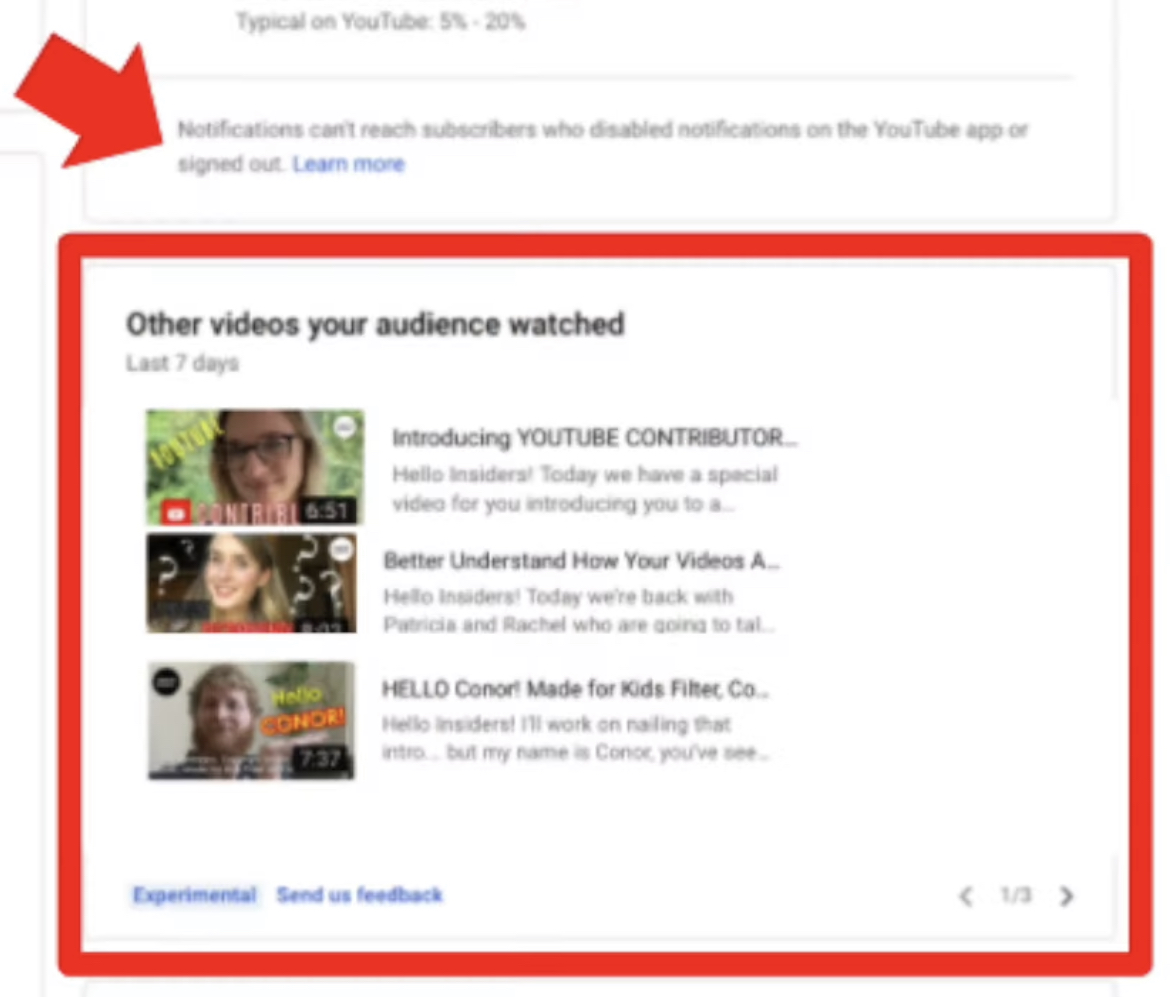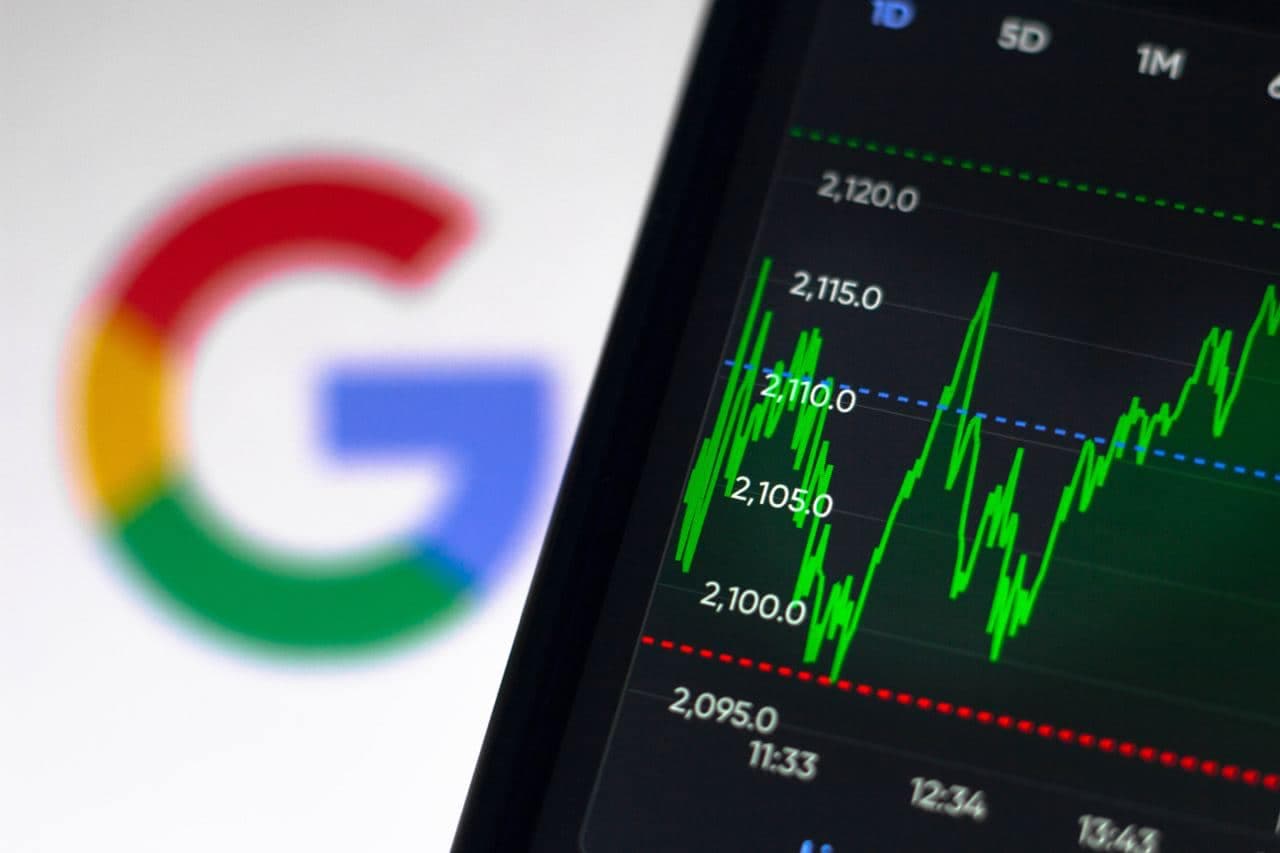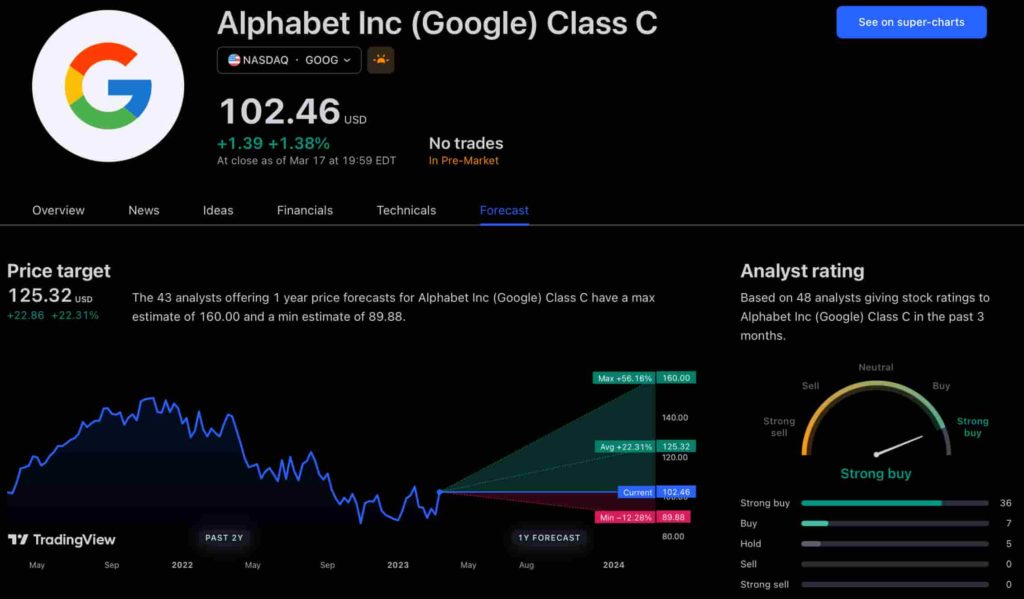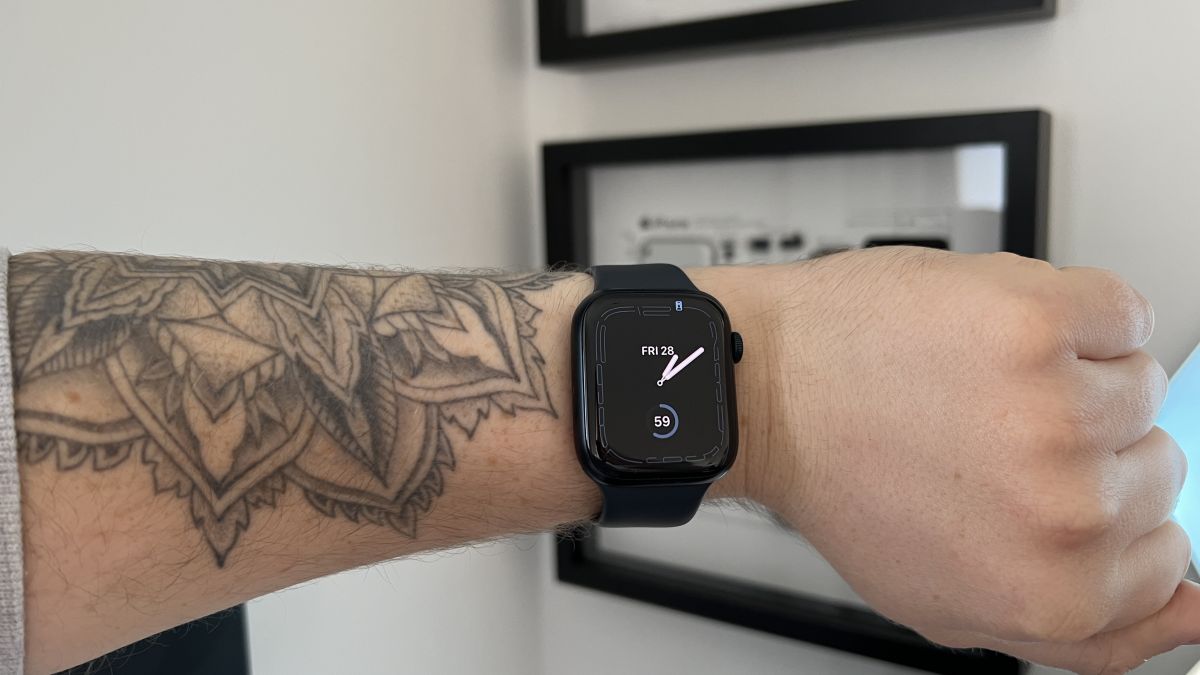The new app is called watchGPT and as I tipped off already, it gives you access to ChatGPT from your Apple Watch. Now the $10,000 question (or more accurately the $3.99 question, as that is the one-time cost of the app) is why having ChatGPT on your wrist is remotely necessary, so let’s dive into what exactly the app can do.
NEWS
YouTube Shares 3 Keyword Research Tips For Videos

YouTube offers advice on competitive keyword research for videos, and answers a number of other questions about its search and discovery algorithm.
In what has become a regular series on YouTube’s Creator Insider channel, a member of the search and discovery team fields questions from users in the first upload of the year.
One of those questions focuses on keyword research and how to gauge which video topics will resonate with users.
Here’s a recap of the questions and answers, starting first with the keyword research question.
YouTube Keyword Research
When researching which keywords to use in a video, what is a good way to gauge the likelihood that it will be surfaced in users’ recommendations?
YouTube recommends these three tactics for keyword research:
- Audience Insights
- Google Trends
- Competitive Analysis
Audience Insights
Within YouTube Analytics is an Audience Insights card that shows creators what other videos their audience is watching.

This can be a useful source for keyword research as you may discover new topics your viewers are interested in that you hadn’t considered before.
Creators should pay close attention to titles and thumbnails of videos surfaced in the Audience Insights card. Analyze the similarities as a way to guide the optimization of your next videos.
Google Trends
This one may be obvious to SEOs, but YouTube recommends Google Trends as a way to stay informed about which topics are popular right now.
With Google Trends you can enter multiple topics and compare their popularity over time to see which once is currently generating the most interest.
Let’s take two enormously popular topics on YouTube: Roblox and Minecraft. Which is more popular right now? Let’s take a look.

You can see how there was a time in September 2020 where the two topics were equally popular, but now the gap has widened and Minecraft is generating the most interest. It looks like Roblox is even declining in popularity.
If you have a few topics in mind and can’t decide which one should be the focus of your next video, Google Trends can help inform your decision.
Competitive Analysis
Another tactic SEOs are familiar with is competitive analysis. This involves entering keywords in YouTube’s search bar and seeing what you can learn from the most successful videos.
Analyze aspects such as titles, thumbnails, descriptions, intros, use of video chapters, ad placement, and so on.
Your goal is to determine not only what encourages users to click on the video, but what keeps them watching until the end.
Other Algorithm Questions
YouTube addresses several additional questions about its algorithm. Here’s a summary of everything else that’s discussed.
Upload Frequency
Is it better to publish videos regularly? Or is it acceptable to let large gaps of time elapse between video uploads?
Ideal upload frequency depends more on the viewers and how much content they’re willing to watch. There’s audiences who enjoy binge-watching content, and others who would prefer to watch a video every few days.
As it relates to YouTube’s discovery algorithm, there’s no single approach that’s going to work for all channels. The algorithm is designed to surface videos based on how users respond when they see those videos in their recommendations.
If you upload content on a regular basis, but those videos go unwatched by a majority of your audience, then that may impact how the algorithm surfaces your videos in the future.
YouTube recommends experimenting to see what works best for your specific audience. Then cater to their viewing habits based on what you learn.
Monetization
Is it true that monetized videos have a greater likelihood of being recommended over non-monetized videos?
YouTube’s search and recommendation system is not able to identify which videos are monetized and which ones aren’t. The advertising and discovery systems are separate from each other.
To answer the question – no, monetization has no impact on which videos are recommended to users. Channels can even turn off monetization temporarily without any impact to video performance.
Taking Breaks From Uploading
Is it okay for video creators to take breaks from uploading videos? Will a channel get hurt algorithmically if there’s an extended length of time between new content being published?
It’s perfectly fine for creators to take breaks. YouTube actively encourages it and cites data to back this up.
YouTube analyzed 40,000 upload breaks that lasted between 8 and 60 days. It found there’s no correlation between upload breaks and a consistent loss of viewership.
Many channels even received higher viewership after taking a break. YouTube’s study found 25% of channels that took a break grew their viewership by 50% after they returned.
There’s no algorithmic penalty for taking a break, and data suggests the longer the break the more positive the change in views. Creators should not feel pressured to upload daily or weekly.
If you’re trying to find an ideal time to take a break, YouTube notes that many creators take breaks in January because that’s when advertising budgets tend to run dry.
For more, see the full video below:
Facebook Faces Yet Another Outage: Platform Encounters Technical Issues Again

Uppdated: It seems that today’s issues with Facebook haven’t affected as many users as the last time. A smaller group of people appears to be impacted this time around, which is a relief compared to the larger incident before. Nevertheless, it’s still frustrating for those affected, and hopefully, the issues will be resolved soon by the Facebook team.
Facebook had another problem today (March 20, 2024). According to Downdetector, a website that shows when other websites are not working, many people had trouble using Facebook.
This isn’t the first time Facebook has had issues. Just a little while ago, there was another problem that stopped people from using the site. Today, when people tried to use Facebook, it didn’t work like it should. People couldn’t see their friends’ posts, and sometimes the website wouldn’t even load.
Downdetector, which watches out for problems on websites, showed that lots of people were having trouble with Facebook. People from all over the world said they couldn’t use the site, and they were not happy about it.
When websites like Facebook have problems, it affects a lot of people. It’s not just about not being able to see posts or chat with friends. It can also impact businesses that use Facebook to reach customers.
Since Facebook owns Messenger and Instagram, the problems with Facebook also meant that people had trouble using these apps. It made the situation even more frustrating for many users, who rely on these apps to stay connected with others.
During this recent problem, one thing is obvious: the internet is always changing, and even big websites like Facebook can have problems. While people wait for Facebook to fix the issue, it shows us how easily things online can go wrong. It’s a good reminder that we should have backup plans for staying connected online, just in case something like this happens again.
NEWS
We asked ChatGPT what will be Google (GOOG) stock price for 2030

Investors who have invested in Alphabet Inc. (NASDAQ: GOOG) stock have reaped significant benefits from the company’s robust financial performance over the last five years. Google’s dominance in the online advertising market has been a key driver of the company’s consistent revenue growth and impressive profit margins.
In addition, Google has expanded its operations into related fields such as cloud computing and artificial intelligence. These areas show great promise as future growth drivers, making them increasingly attractive to investors. Notably, Alphabet’s stock price has been rising due to investor interest in the company’s recent initiatives in the fast-developing field of artificial intelligence (AI), adding generative AI features to Gmail and Google Docs.
However, when it comes to predicting the future pricing of a corporation like Google, there are many factors to consider. With this in mind, Finbold turned to the artificial intelligence tool ChatGPT to suggest a likely pricing range for GOOG stock by 2030. Although the tool was unable to give a definitive price range, it did note the following:
“Over the long term, Google has a track record of strong financial performance and has shown an ability to adapt to changing market conditions. As such, it’s reasonable to expect that Google’s stock price may continue to appreciate over time.”
GOOG stock price prediction
While attempting to estimate the price range of future transactions, it is essential to consider a variety of measures in addition to the AI chat tool, which includes deep learning algorithms and stock market experts.
Finbold collected forecasts provided by CoinPriceForecast, a finance prediction tool that utilizes machine self-learning technology, to anticipate Google stock price by the end of 2030 to compare with ChatGPT’s projection.
According to the most recent long-term estimate, which Finbold obtained on March 20, the price of Google will rise beyond $200 in 2030 and touch $247 by the end of the year, which would indicate a 141% gain from today to the end of the year.
Google has been assigned a recommendation of ‘strong buy’ by the majority of analysts working on Wall Street for a more near-term time frame. Significantly, 36 analysts of the 48 have recommended a “strong buy,” while seven people have advocated a “buy.” The remaining five analysts had given a ‘hold’ rating.

The average price projection for Alphabet stock over the last three months has been $125.32; this objective represents a 22.31% upside from its current price. It’s interesting to note that the maximum price forecast for the next year is $160, representing a gain of 56.16% from the stock’s current price of $102.46.
While the outlook for Google stock may be positive, it’s important to keep in mind that some potential challenges and risks could impact its performance, including competition from ChatGPT itself, which could affect Google’s price.
Disclaimer: The content on this site should not be considered investment advice. Investing is speculative. When investing, your capital is at risk.
NEWS
This Apple Watch app brings ChatGPT to your wrist — here’s why you want it

ChatGPT feels like it is everywhere at the moment; the AI-powered tool is rapidly starting to feel like internet connected home devices where you are left wondering if your flower pot really needed Bluetooth. However, after hearing about a new Apple Watch app that brings ChatGPT to your favorite wrist computer, I’m actually convinced this one is worth checking out.
-

 SEO7 days ago
SEO7 days agoGoogle Limits News Links In California Over Proposed ‘Link Tax’ Law
-

 SEARCHENGINES6 days ago
SEARCHENGINES6 days agoGoogle Core Update Volatility, Helpful Content Update Gone, Dangerous Google Search Results & Google Ads Confusion
-
SEARCHENGINES7 days ago
Daily Search Forum Recap: April 12, 2024
-

 SEO6 days ago
SEO6 days ago10 Paid Search & PPC Planning Best Practices
-

 MARKETING6 days ago
MARKETING6 days ago2 Ways to Take Back the Power in Your Business: Part 2
-

 SEARCHENGINES5 days ago
SEARCHENGINES5 days agoWeekend Google Core Ranking Volatility
-

 MARKETING5 days ago
MARKETING5 days ago5 Psychological Tactics to Write Better Emails
-

 PPC6 days ago
PPC6 days agoCritical Display Error in Brand Safety Metrics On Twitter/X Corrected












